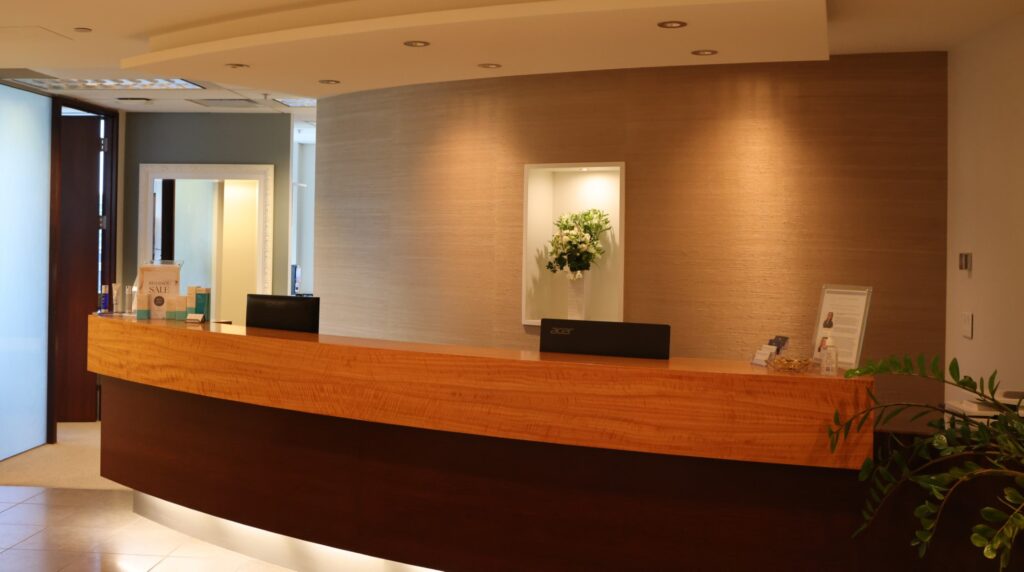Are you looking to improve the shape and fullness of your lips? A lip lift may be the perfect solution for you.
A lip lift can restore the youthful contours of your lips, giving you a refreshed and confident appearance.
Find out if you’re a candidate for a lip lift, learn more about the procedure, what it can do for you, and the risks associated.

Who is a Candidate For a Lip Lift
Who is a good candidate for a lip lift? Those with a long white lip, or philtum, measuring 15 mm or more tend to be ideal. However, each patient’s individual needs should also be taken into consideration.
During the procedure, which is performed under local anesthesia, skin is removed from below the nose and the lip is sculpted. Deep dissolving sutures and skin-level non-dissolving sutures are placed for optimal incision healing. Bull horn or corner lifts may be used to customize the process, while modern lip lift procedures avoid extending around the base of the nose to reduce the risk of poor scarring.
After the procedure, medications such as antibiotics, Tylenol #3, and a steroid may be prescribed. Patients should avoid strenuous activity and soaking for two weeks, and consume a soft diet during the first 48 hours. After four weeks, the scar can be massaged with a specific silicone gel ointment to optimize the healing, and at three weeks, foundation can be used to help conceal any scarring. (place the 3 week instructions before the four week instruction to keep the timeline in order please).
A lip lift can reduce the distance between the upper red lip and the base of the nose, increase dental show, reduce nasolabial and mesolabial folds, and treat asymmetry. It’s important to note that a lip lift won’t eliminate smoker’s improve the lines around the lips.
This procedure is usually only required once in a lifetime, and the risks include infection, overcorrection, undercorrection, significant changes in lip motion, poor scarring, nostril widening, smile distortions, and asymmetry.
Benefits of a Lip Lift
The benefits of a lip lift include:
- Reducing the distance between the upper red lip and the base of the nose
- Increasing dental show
- Reducing nasolabial and mesolabial folds
- Treating asymmetry
- Increase the dimple at the philtral column
- Raise the height of the upper red lip
The procedure is usually done under local anesthesia and involves:
- Removing skin under the nose
- Sculpting the muscle
- Using dissolving and non-dissolving sutures
Filler is often dissolved prior to the procedure. There is less chance of infection when the filler is dissolved before the lift.
After the procedure, medications such as an antibiotic, Tylenol #3, and a steroid can reduce swelling and inflammation. Strenuous activities should be avoided for two weeks and no baths or swimming for four weeks. After four weeks, the scar can be massaged with a specified silicone gel to optimize the healing.
A lip lift is a great way to:
- Reduce the distance between the upper red lip and the base of the nose
- Increase dental show
- Reduce nasolabial and mesolabial folds
Lip Lift Procedure
Knowing the specifics of the lip lift procedure can help you make an informed decision about this cosmetic surgery option.
The procedure is typically done under local anesthesia, and the surgeon may dissolve lip filler prior to the lift to reduce the risk of infection. Skin is then removed from under the nose, usually more from the outer aspects than the central area.
A deep plane technique is used to reduce the chance of a wide scar, and sutures are placed to ensure the best healing. In some cases, muscle sculpting may be done under the nose or along the central dimple, and a bull horn lift pattern is often used. Modern lip lifts generally avoid extending around the base of the nose.
After the procedure, patients should take antibiotics, Tylenol #3, and sometimes a steroid to reduce swelling and inflammation. For the first 48 hours, a soft diet is advised, and strenuous activity should be avoided for two weeks. Avoiding soaking for four weeks is also important.
After the healing process, foundation can be used to help conceal any scarring. Lip lifts can last a lifetime. Knowing the risks, such as infection, asymmetry, and poor scarring, can also help you make an informed decision.

Lip Lift Recovery
After a lip lift procedure, proper recovery is essential to achieving the best results.
To ensure the best outcome, patients should take medication as prescribed by their doctors and consume a soft diet for the first 48 hours.
It’s important to avoid strenuous activity for two weeks and to not soak in water for four weeks. Immediately after the procedure, showering is permitted, but baths and swimming should be avoided.
After four weeks, scar massage with a specified silicone gel can be used to optimize the healing. The scar will take up to two months to heal and will continue to improve over the next 24 months. Foundation can be used to help conceal the scarring after three weeks.
It’s important to note that lip lift recovery will vary from person to person, depending on their individual’s genetics and the procedure performed. Patients should follow their doctor’s instructions to ensure the best possible outcome.
Risks and Complications of Lip Lift Surgery
While it’s important to follow your doctor’s instructions to ensure the best possible outcome, it’s also important to be aware of the risks and complications of lip lift surgery.
Infection is the most common risk and can occur if proper hygiene isn’t followed.
Overcorrection or undercorrection can also occur if the doctor miscalculates the amount of skin to be removed.
It’s also possible that the surgery can cause significant changes in lip motion, poor scarring, nostril widening, smile distortions, and asymmetry.
Delayed healing is another possible complication and can make it difficult to recover in a timely manner.
The risk of these complications increases if you go to an inexperienced doctor or if you don’t follow the aftercare instructions.
It’s important to choose a board-certified plastic surgeon to ensure the best possible outcome and to minimize the risks associated with the procedure.
Lip Lift Cost in Vancouver
Considering the risks and complications associated with lip lift surgery, it’s important to understand the cost of the procedure in Vancouver. Lip lift surgery is generally considered a cosmetic procedure, so it isn’t covered under most health insurance plans.
The cost of a lip lift in Vancouver can vary widely depending on the complexity of the procedure and the expertise of the surgeon.
Generally, the total cost of the procedure can range from $2,000 to $7,000. This cost may include pre-operative examinations, the lip lift procedure itself, and post-operative care. The cost of anesthesia and any necessary medications may also be included.

How Long Does a Lip Lift Last
Generally, a lip lift is usually a one-time procedure that can last for the patient’s lifetime. However, this isn’t always the case and it may be necessary to repeat the procedure if the lip length increases again. The risk of this increases when people use large amounts of lip filler.
On average, a lip lift can take up to 10-12 one to two months to fully heal and the scars may continue to improve over the first 24 months. There is a subtle change in lip motion during this period of time. The risk of complications, such as infection, overcorrection, undercorrection, poor scarring, and asymmetry, are rare when performed by a qualified plastic surgeon.
Lastly, it’s important to note that a lip lift won’t increase the plumpness or volume of the lips, but it will increase the amount of red lip show, it can reduce the need for fillers, and improve the appearance of nasolabial and mesolabial folds.
Non-Surgical Lip Enhancement
For those looking to enhance their lips without undergoing surgery, non-surgical lip enhancement is an effective and safe option. It involves the use of dermal fillers such as hyaluronic acid to plump and shape the lips.
Fillers will not change the shape of the lips but can enhance the volume of fullness of the lips you have already. The fillers are injected into precise areas of the lips to achieve the desired effect and are tailored to the individual’s needs. It’s important to visit an experienced and qualified injector as they’ll be able to advise on the best results and ensure the risks are kept to a minimum.
The results of the treatment can be seen immediately and can last for up to 12 months depending on the individual. The treatment is also reversible and can be easily dissolved if the patient isn’t happy with the results. Common side effects include swelling, redness, and bruising at the injection site, but these should subside quickly.
Non-surgical lip enhancement can be a great way to enhance the shape and size of the lips without the need for surgery. It can also be used to reduce the appearance of wrinkles around the lips. However, it’s important to note that the results aren’t permanent, so the treatment may need to be repeated in order to maintain the desired results.
Permanent vs Temporary Results
When it comes to lip lifts, you can expect lasting results that can last many, depending on the type of procedure and individual patient.
Lip lifts are permanent procedures that involve removing excess skin and sculpting the underlying muscles under the nose or around the philtrum. The results are immediate, with only a few weeks of swelling and tenderness. Lip lifts don’t use fillers, and so the results aren’t temporary. They can also create a more symmetrical appearance and increase the amount of red lip show.
On the other hand, non-surgical lip enhancement uses fillers to achieve more plumped-up results. The effects are temporary, lasting anywhere from 6-12 months, and they can be easily reversed. However, they aren’t permanent solutions and require maintenance to maintain the desired look.
The choice between permanent and temporary lip enhancement is ultimately a personal one. If you’re looking for a long-term solution, a lip lift may be the way to go. However, if you’re looking for a quick fix with minimal downtime, non-surgical lip enhancement may be the right choice. There is also a difference between the change that is produced by lip lifts and the change produced by the use of fillers.
Ultimately, it’s important to discuss your goals and expectations with a qualified doctor to determine the best course of action.
Revision Lip Lifts
Revision lip lifts are for those who’ve had a previous lip lift that didn’t turn out as expected. It’s an opportunity to correct the issues that arose with the first procedure and to achieve the desired result. Revision lip lifts can involve removing scar tissue, redefining the lip shape, or even deepening the philtrum to create a more youthful look.
The procedure can be done under local anaesthetic and usually takes around one to two two hours. It’s important to consult with an experienced and skilled plastic surgeon if you’re considering a revision lip lift in Vancouver. This will help to ensure that the results are as desired and that the risk of complications is minimized.
It’s also important to be aware that a revision lip lift may take more time, require more stitches, and have a longer recovery period than a traditional lip lift. While the results can be very effective, it’s important to be realistic about the outcome and to be mindful of the potential risks.
Lip Lift Frequently Asked Questions (FAQ)
Lip lift surgery is a cosmetic procedure designed to shorten the skin distance between the top lip and the base of the nose. This enhances the upper lip’s appearance, making it look fuller and more defined. It’s often sought by individuals looking to achieve a more youthful or aesthetically pleasing lip shape.
Ideal candidates are those in good physical health, and have realistic expectations about the outcome. Individuals with a long philtrum (the area between the nose and upper lip) or those looking to enhance the visibility of their upper teeth when smiling may benefit most.
The procedure is typically performed under local anesthesia. A small incision is made under the nose, and a strip of skin and tissue is removed to lift the lip to its new position. The technique varies depending on the desired outcome and the individual’s facial structure.
Recovery time varies but generally, patients can return to normal activities within a week. Swelling and bruising may last one to three weeks. Complete healing and final results take several months as the scars mature and fade.
As with any surgical procedure, risks include infection, scarring, asymmetry, changes in motion and changes in sensation. Choosing a qualified and experienced surgeon can help minimize these risks.
The results of a lip lift are generally permanent. However, aging and gravity will continue to affect the face over time, which may alter the appearance of the lips in the long term.
It’s challenging to reverse a lip lift due to the removal of skin and tissue. However, adjustments may be possible. It’s important to discuss expectations and potential outcomes with your surgeon beforehand.
Non-surgical options, like fillers, can temporarily increase the lip’s volume but do not shorten the lip and do not offer the permanent structural changes of a lip lift. Fillers treatments need to be repeated periodically.
Costs vary based on the surgeon’s experience and the specific technique used. Generally, prices range from $2,000 to $7,000. Note that most insurance plans do not cover cosmetic surgery.
During a consultation, Dr. Anzarut will evaluate your facial structure, discuss your aesthetic goals, and explain the procedure options. He’ll also cover the risks, recovery process, and costs involved.
Preparation may include stopping smoking, avoiding certain medications that increase bleeding risk, and arranging for someone to drive you home after the procedure. Your surgeon will provide detailed instructions based on your specific case.
Scarring is minimal and usually concealed under the nose. Proper care and following your surgeon’s post-operative instructions can help ensure scars heal well and become less noticeable over time.
Initially, you may experience stiffness or a lack of mobility in your upper lip, affecting your smile. These symptoms typically improve as you heal.
A lip lift provides a permanent alteration to the lip’s position and shape by removing skin, while lip fillers are temporary, injectable treatments that add volume to the lips.

